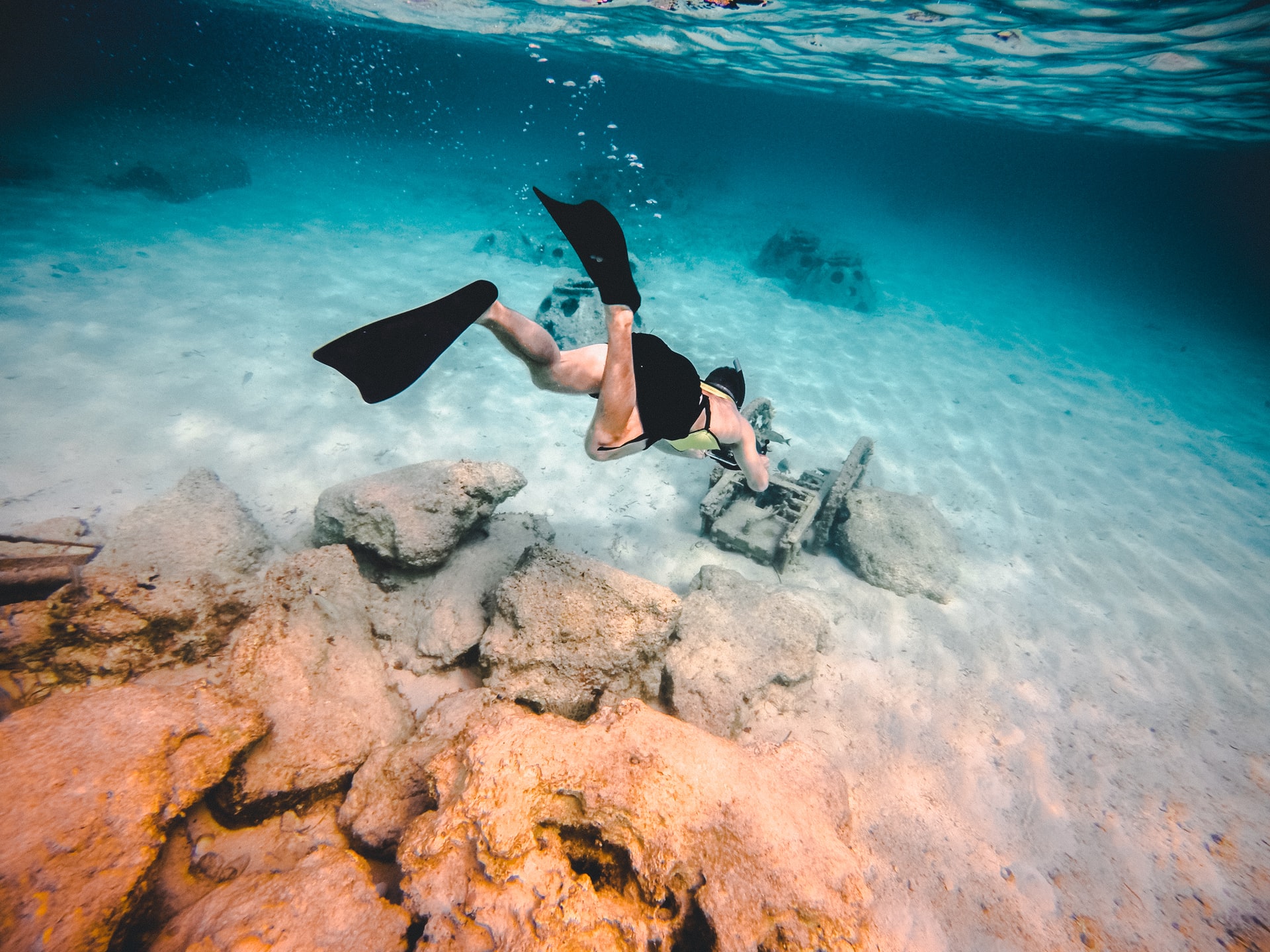Most people will make their first attempt at snorkeling in water that’s shallow enough to stand up in, as it’s the most comfortable and safe way to begin.
But very shallow water might not have too much to look at, and if you want to duck dive under, it can be very tricky or impossible.
So can you snorkel in deep water?
Snorkeling in deeper water is possible and can be great fun.
We’re going to look at snorkeling a bit deeper, see what the benefits are, and what you need to consider as the bottom gets further away.
- At What Depth Is Snorkeling Normally Done?
- How Deep Can You Snorkel?
- Can I Snorkel in Waist-Deep Water?
- How Do You Snorkel Deeply?
- How Long Can You Stay Underwater Snorkeling?
- 4 Benefits of Snorkeling in Deeper Water
- 4 Downsides of Snorkeling in Deeper Water
- 4 Benefits of Snorkeling in Shallow Water
- 4 Downsides of Snorkeling in Shallow Water
- Do I Need a Different Snorkel or Mask When Snorkeling in Deep Water?
- Conclusion
- You Might Also Like…
Disclosure: this post contains affiliate links (clearly marked with ), which means we may earn a commission if you buy something through them, at no additional cost to you.
At What Depth Is Snorkeling Normally Done?
When you’re snorkeling, you remain at the surface unless you’re skin/duck diving, so your front will only be approximately 12” / 30cm deep.
Generally speaking, after they’ve gained confidence in shallow water, most people will snorkel in water that’s between 10 ft / 3m and 30 ft / 10m deep.
At these bottom depths, there’s usually plenty to see, and if you want to duck dive, it’s entirely possible and safe to do so without crashing straight into the bottom.
How Deep Can You Snorkel?
To breathe freely through the snorkel, we need the open end to be above the water surface, so that limits how deep we can go.
Floating at the surface itself is comfortable and relatively easy, and the snorkel allows you to breathe comfortably with your face in the water, even if there are small waves.
But could you go deeper underwater by using a long snorkel?
Standard snorkels are usually a maximum of 12” / 30cm long for two critical reasons.
Firstly, you’re limited by the pressure exerted by the water around you.
The deeper the water is, the more pressure it applies to you and critically to your lungs.
It’s impossible to breathe in through a snorkel if you are deeper underwater than about two ft / 60cm as the surrounding pressure would stop your lungs from inflating.
You’d be able to breathe out but wouldn’t be able to breathe in.
Secondly, if the snorkel were too long, you wouldn’t be able to clear the air from the snorkel tube entirely when you breathe out as the volume would be too large.
This would mean that the carbon dioxide you exhale would stay in the snorkel (called dead air), and you’d inhale it again.
Eventually, the dead air would become stale, and you might pass out from a lack of oxygen.
So you can see that it’s not possible to breathe from below the surface with a long snorkel.
Scuba divers can breathe deeper underwater because the scuba system gives them air to breathe at a suitable pressure for the depth that they’re at.
Their bubbles are exhaled into the water, so they’re inhaling fresh air with every breath.
To get away from the surface as a snorkeler, the only way is to hold your breath and skin or duck dive down, which we will look at shortly.
Once they’ve practiced this, the average snorkeler can dive down from the surface with their breath held to as deep as 30 ft / 10m.
Can I Snorkel in Waist-Deep Water?
It’s possible to snorkel in waist-deep water, and for many people, this is the best place to start.
When learning snorkeling techniques, having a bottom that you can stand on is a great way to build confidence.
However, it needs to be a sandy bottom or even a swimming pool so that you won’t do any damage to sensitive aquatic life with your fins.
Snorkelers need to be aware that standing on corals or other life or touching with hands or your fins can cause extensive damage that can take years to recover.
As confidence grows but skills are still developing, most snorkelers need to be in water deeper than about 10 ft / 3m so that it’s not possible for their fins to accidentally come into contact with anything even when they stop and float vertically.
If there is something sensitive like a coral reef, you need to be experienced and very competent to snorkel over it if the water is shallow to avoid causing any damage and also protect yourself from cuts and nasty stings.
It’s possible to learn control of your fins and body and snorkel in water of as little as 3ft / 1m depth and not touch the bottom.
However, this should not be attempted if there’s a strong current or swell, as it will be impossible for even the most experienced snorkeler to stay away from coral or rocks.
It’s also best only to do it where you can quickly reach deeper water where you can float comfortably in a relaxed way if you do want to stop.
How Do You Snorkel Deeply?
If you want to be able to leave the surface as a snorkeler and take a look at something a bit deeper, then you’ll need to learn how to duck dive (also known as skin diving).
Duck diving can be great fun, but it’s a good idea to get comfortable with snorkeling basics first before you attempt it.
You’ll need to be happy with blast clearing your snorkel to get water out, and efficient kicks with your fins are required to get under the surface.
If you think you need help, then there are training courses and certifications that you can take with an instructor to show you everything you need to be proficient.
The basic steps to skin dive are as follows:
- Check below to make sure there is sufficient depth, and that your route is clear
- With your mask and snorkel in place, take no more than three deep breaths in (no more than three to avoid shallow water blackout)
- Hold the last breath in and get ready to dive
- Pivot your body at the waist so your head and upper body leaves the surface and start to kick
- As you swim down, you must equalize your ears before you feel any discomfort
- When you feel the need to come back to the surface, start to swim up
- Look up and raise an arm to protect your head
- When you reach the surface, blast your snorkel clear and breathe in gently
Remember that you should take turns with your buddy and duck dive one at a time.
One of you must always stay at the surface, watching the other just in case there’s a problem.
Equalizing the ears is a common problem and takes practice. It’s very easy to swim too deep and cause yourself pain or even damage.
As you swim down, pinch your nose through the nose pocket of the mask and gently blow against it to keep your ears safe (just like you might do on an airplane, but without the mask).
Remember that you shouldn’t push yourself and swim down further if you do feel pain.
Swim back to the surface and try again shallower until you have the techniques down.
How Long Can You Stay Underwater Snorkeling?
The average snorkeler can duck dive down safely to a maximum of about 30 ft / 10m with practice.
How long they can stay there will depend on their experience and comfort level.
The more relaxed you are and the less you move underwater, the longer you’ll be able to stay.
With practice, most people can skin dive for about 1 minute.
If you enjoy the feeling of being underwater and want to be able to stay longer and go deeper, then you should consider learning freediving.
With the proper training, practice, and special freediving equipment, it’s possible to stay underwater for many minutes and reach great depths.
The world record for self-propelled freediving is a staggering 130m deep, while the longest underwater breath-hold is nearly 12 minutes.
4 Benefits of Snorkeling in Deeper Water
1. The Chance to See a Wider Variety of Aquatic Life
You’re more likely to see bigger and more varied fish and possibly larger creatures like turtles or rays in deeper water.
2. Get a Wide Overview of the Aquatic Environment
Many people like being able to look over a wide area to get a complete picture of the underwater world if the water is clear enough.
3. Allows You to Duck or Skin Dive
With deeper water below you, it’s possible to duck down under to get a closer look or a different perspective.
4. Less Risk of Damaging Sensitive Aquatic Live
It’s much less likely that you’ll damage anything below you in deeper water, but you’ll still need to take care of anything that might be to your side still like a reef wall.
4 Downsides of Snorkeling in Deeper Water
1. Needs Clear Water
If the water you’re in doesn’t have reasonable clarity, you can be limited in what you see as it gets deeper.
2. Colors Disappear With Depth So Everything Can Look Blue Below You
Water absorbs light of different colors as it gets deeper, meaning that in deep water, even with good water clarity, things below you can be left looking blue.
This can be of particular concern if you’re taking photos while snorkeling.
If this is the case, stick to water shallower than 30 ft / 10m, and you’ll get better colors in your shots.
3. Some People Feel the Effects of Vertigo
It’s possible to feel disorientated or dizzy, particularly in very clear water.
If this is the case for you, then stick to snorkeling in shallow water where you feel more comfortable.
4. Greater Risk From Boat Traffic
Deeper water tends to bring an increased risk of encountering boat traffic.
Consider using a brightly colored surface float so that you can be seen more easily.
4 Benefits of Snorkeling in Shallow Water
1. Everything Is Closer, So You’ll Get the Best View
In shallower water, anything you’re looking at below you is going to be closer, so you’ll be able to get a great look even without diving down.
2. Colors Are the Best and Brightest
In shallow water, colors will still appear bright and complete, and you’ll be able to take amazing photos.
3. More Comfortable Especially for Beginners
When starting, many people feel more comfortable in shallow water, especially if they can stand up if needed (if the bottom doesn’t have delicate life growing on it).
4. Reduced Risk of Vertigo
If you do suffer from vertigo, then you’ll probably feel more comfortable staying in shallower water.
4 Downsides of Snorkeling in Shallow Water
1. Increased Chance of Damaging Sensitive Aquatic Life Like Corals
If there are corals or other delicate animals or plants below you, it takes great skill in shallow water to avoid contact with them.
Any contact can cause significant damage or even kill corals, so stay away from these areas.
Remember that contact with corals can cause very painful stings that are similar to being badly burnt.
2. Needs Practice and Skills Not to Stir up Bottom
Even over a bottom that’s mainly sand, it’s very easy to stir up the sand and ruin the visibility without skillful fin kicks.
If you’re having problems perfecting your gentle fin strokes, stick to water deeper than 10ft / 3m.
3. Could Be Less to See
In shallower water, you’re certainly less likely to see larger aquatic life, but it could also be that, depending on the area, the smaller fishes are less too.
In shallow sand areas, you might need to head a bit deeper before you find the extensive fish and coral life that you’re looking for.
4. Can’t Duck Dive Under
In really shallow water, you can’t skin dive, which can be great fun.
Look for water at least 15 ft / 5m deep before diving down, as it’s very easy to crash into the bottom if it’s much shallower.
Do I Need a Different Snorkel or Mask When Snorkeling in Deep Water?
A standard snorkel and mask can be used to snorkel and duck/skin dive irrespective of the water depth.
It’s only if you take up freediving and head down deeper with training that special masks are used.
Conclusion
Snorkeling in deep water can be great fun.
You can skin dive down to take a close look at life that you’ve spotted from the surface or have the chance to see larger aquatic life such as turtles, rays, or bigger fish.
You need clear water and some confidence, but once you have that, snorkeling over deeper water can provide you a spectacular view of the underwater world.
You Might Also Like…
-

Can You Drown Snorkeling? 11 Common Reasons (+Helpful Tips)
-

Can I Use Snorkeling Fins for Bodyboarding? Pros & Cons (+6 Tips)
-

What Colors to Avoid When Snorkeling? (& Which You Should Wear)
-

Is It Safe to Fly After Snorkeling? What You Should Know (+4 Tips)
-
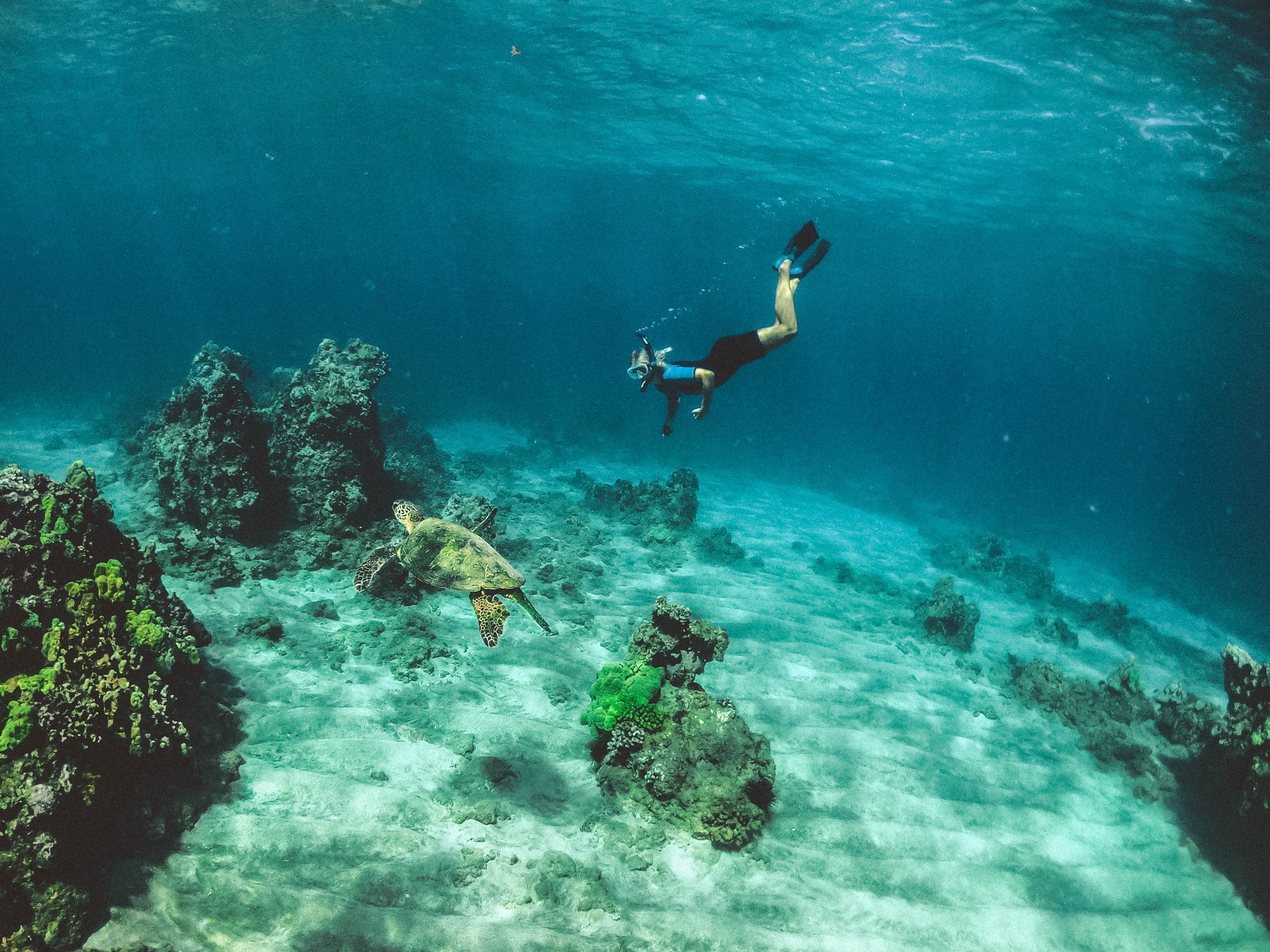
Can’t Hear After Snorkeling? 3 Possible Causes (& Solutions)
-
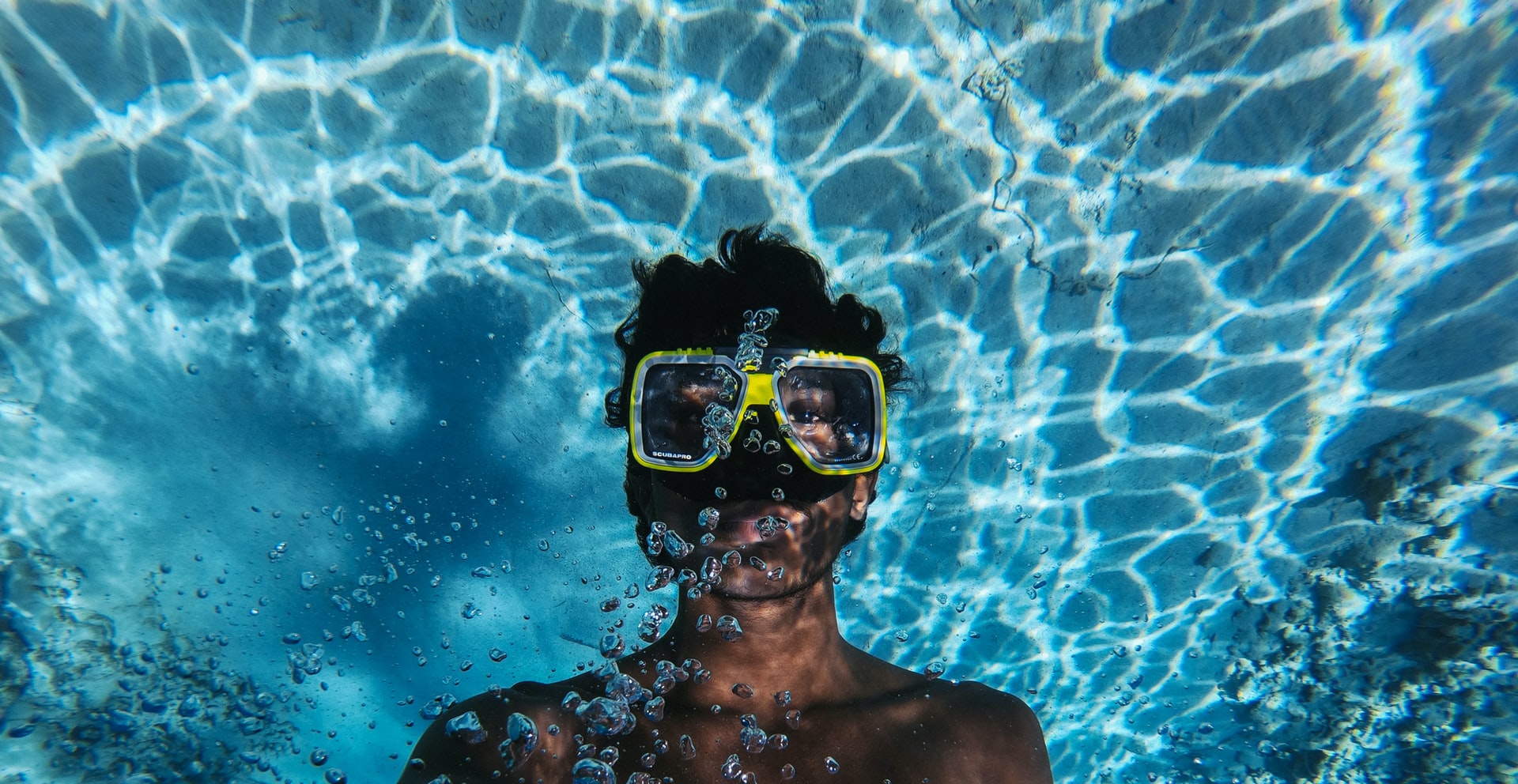
Can Snorkeling Cause a Sinus Infection? (+9 Tips to Avoid It)
-
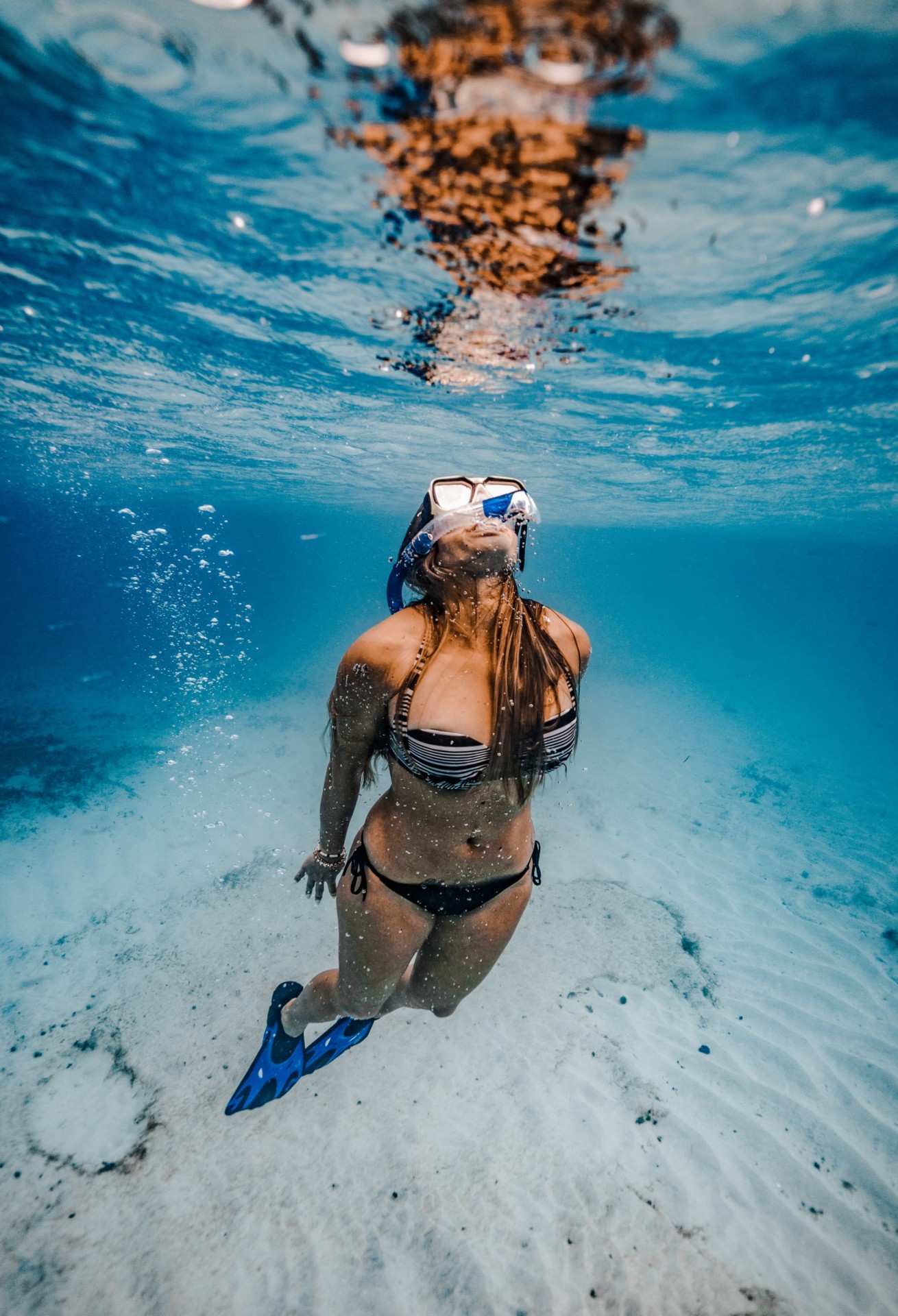
Can Snorkeling Cause a Sore Throat? 8 Common Causes (+Tips)
-
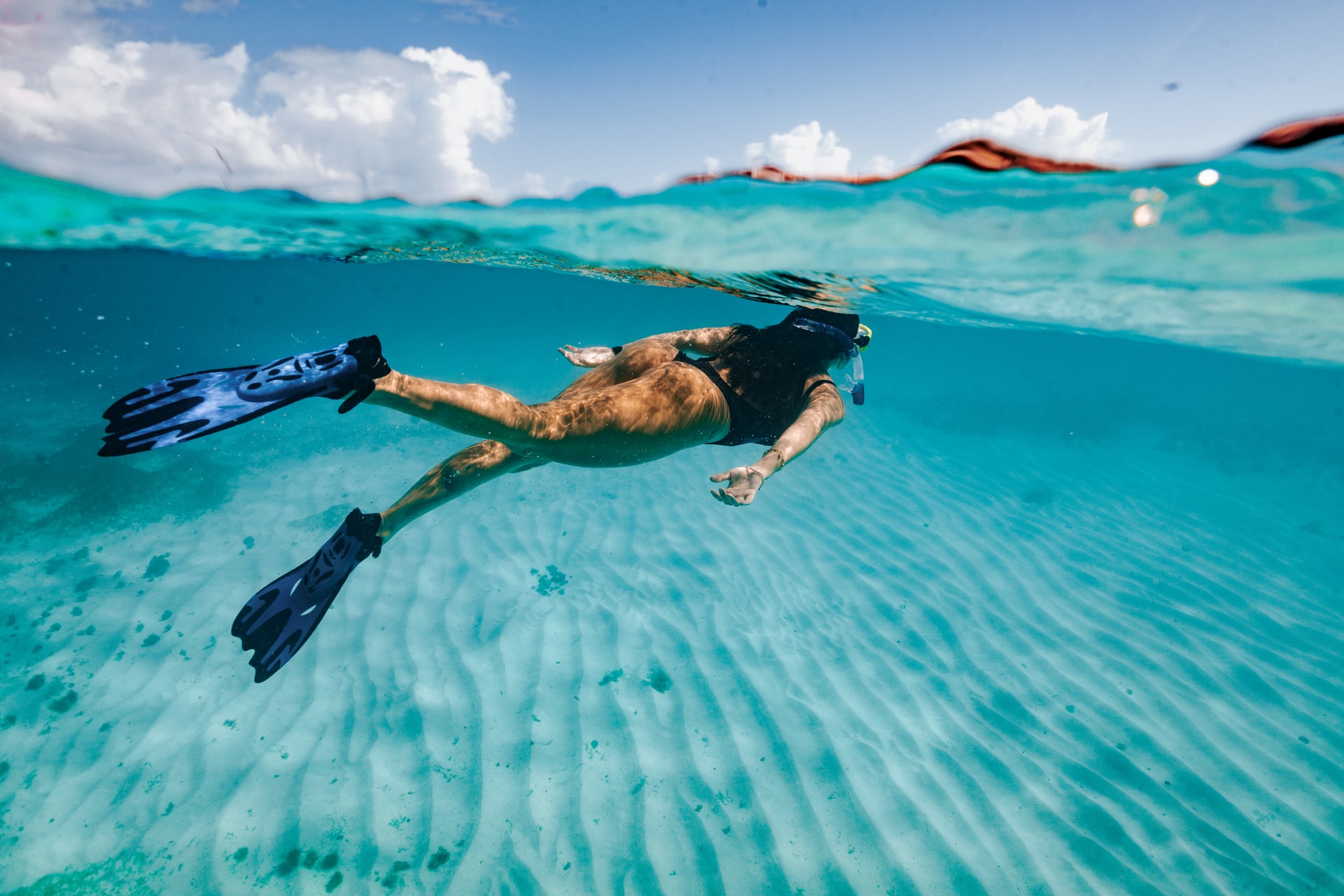
Can Snorkeling Cause Vertigo? (+8 Tips to Avoid It)
-
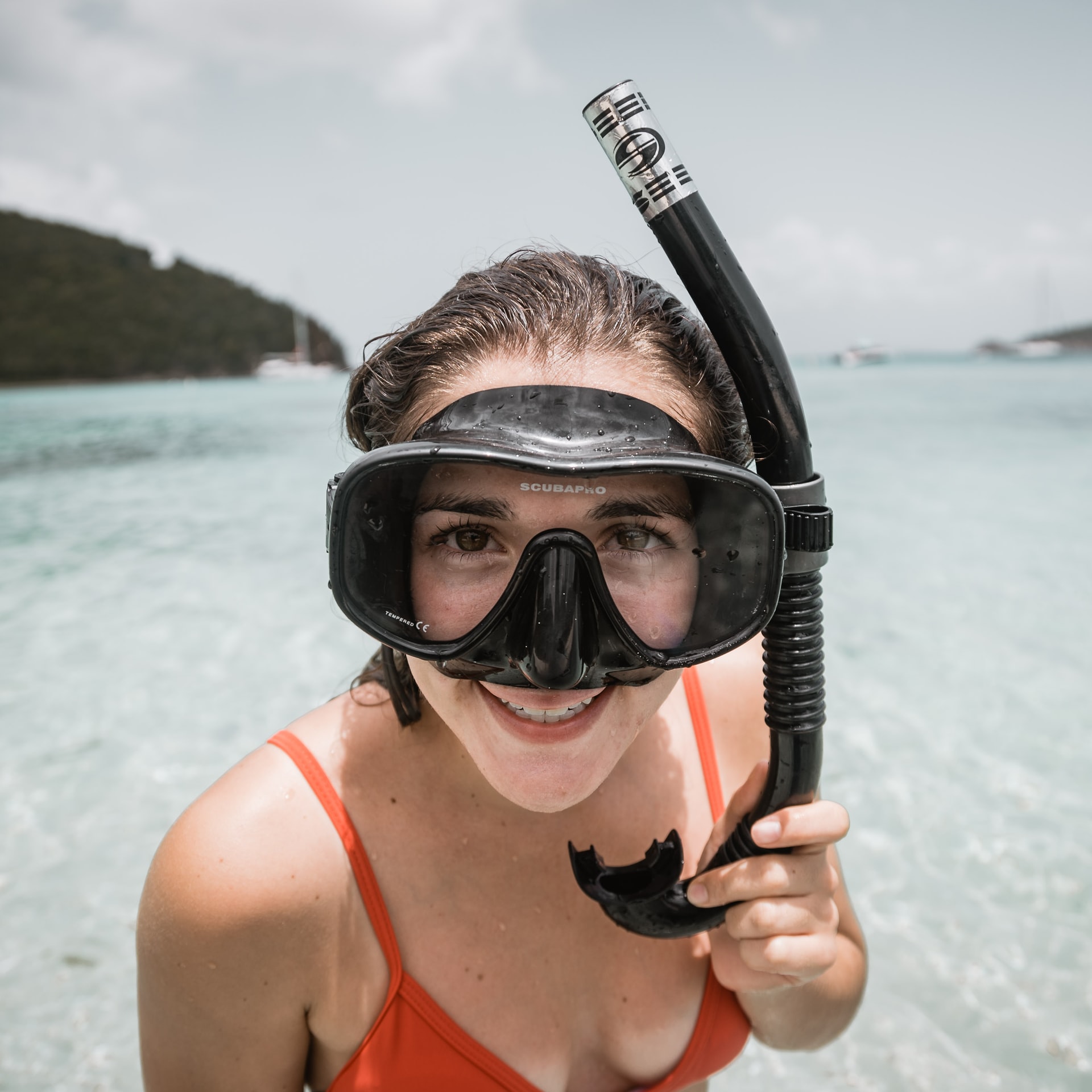
How Do Snorkel Masks Work? (+Regular Vs. Full-Face Masks)
-
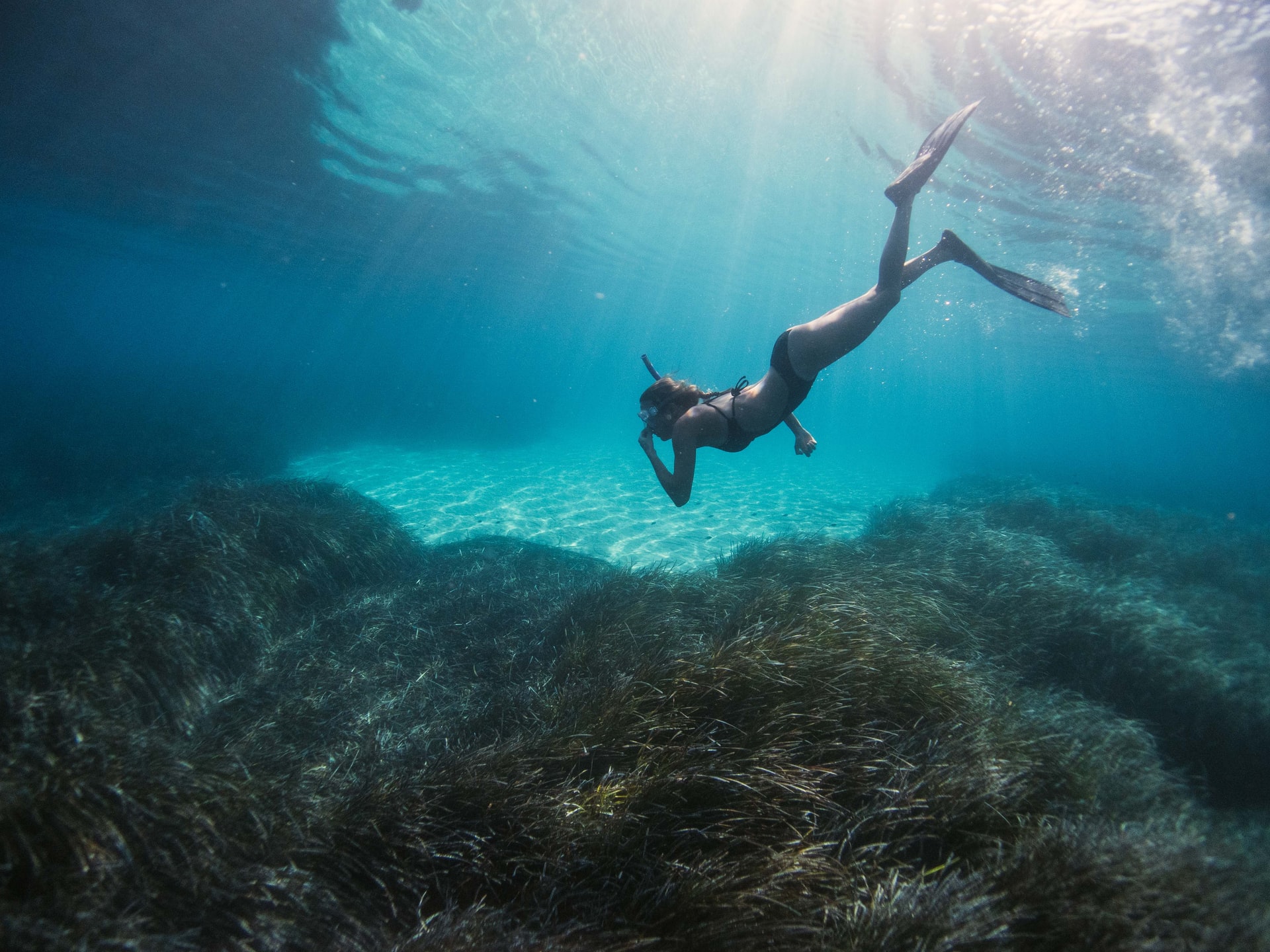
Why Does Snorkeling Make Me Nauseous? (11 Causes & Remedies)
-
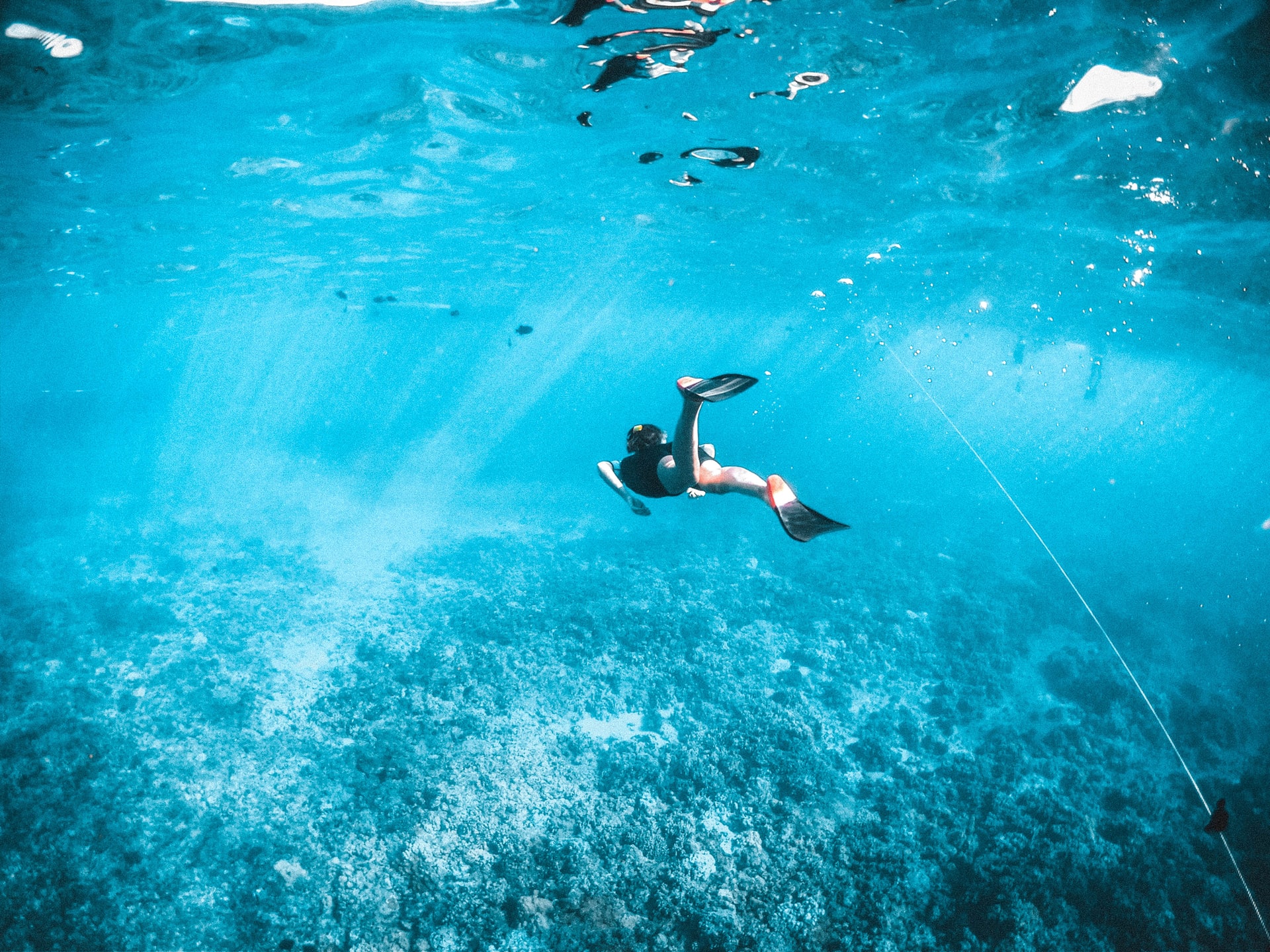
What Does Snorkeling Feel Like? FAQs Answered (for Beginners)
-
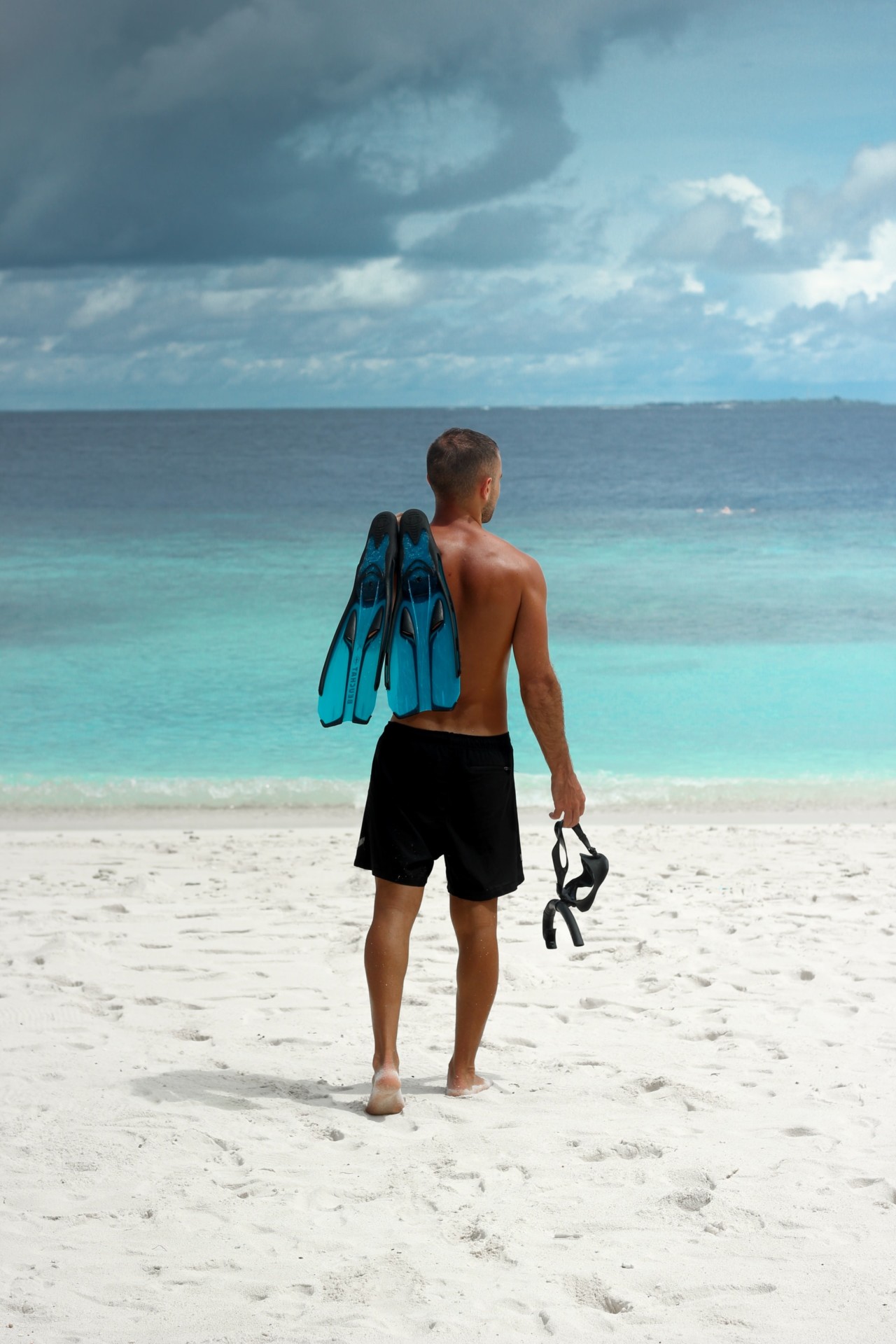
Does Rain Affect Snorkeling Visibility? 4 Ways It Does (+Helpful Tips)

